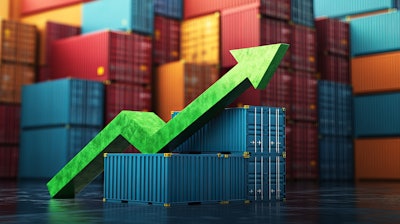
With Donald Trump returning to the White House, the U.S. container trading industry faces a new landscape of both opportunity and complexity. For example, policy shifts such as increased tariffs, tighter trade regulations, and economic stimulus measures are likely to reshape the market.
While these changes could elevate demand and bring optimism among container traders, they also introduce challenges, from inflationary pressures on imports to potential supply constraints in domestic containers.
Here’s an outlook as to how these anticipated changes may impact container traders.
Trump’s re-election could present substantial opportunities for container traders in the U.S. On the domestic front, it’s likely to boost confidence in the economy among our customers (container trades), driving both demand and optimism. However, the impact of higher tariffs is twofold. While we’ll see inflationary pressure on import prices, volumes may stay stable or even increase, depending on how companies respond to new tariffs and counter- tariffs.
With increased tariffs and stricter trade regulations likely on the horizon, the supply of domestic containers in the United States may tighten as the cost of imports rises. This could impact container availability, potentially making used containers more valuable on the secondary market as traders seek affordable options.
Meanwhile, we’re seeing indications of increased domestic demand. Expected fiscal measures to stimulate the U.S. economy may boost demand for used containers within the U.S., as businesses look to capitalize on growth opportunities. However, there are clouds on the horizon, particularly around inflation, which could impact container prices and operational costs. Additionally, any reduction in expected Fed rate cuts may place additional pressure on financing and expansion within the container trade.
Overall, while there’s optimism for higher container demand, the evolving policy landscape may introduce volatility and increase costs, particularly as traders adapt to the impact of new tariffs and potential trade barriers.
Globally, expect pronounced trade disruptions as tariffs come into play. While these may restructure trade routes and lead to circumvention tactics, they often translate to increased demand for container shipping.
These disruptions tend to make trade routes less efficient—when tariffs force companies to avoid direct routes, such as redirecting goods from China through Mexico before reaching the U.S., additional stops increase the number of TEUs and extend the distance traveled to reach the same destination. This not only lengthens transit times but also consumes more fuel, raising demand for both containers and shipping capacity.
In essence, these disruptions, despite potential challenges, can have a positive impact on container rates and industry demand. Anticipate that the coming years under Trump’s administration will continue to reshape global trade routes, likely elevating container demand and prices. These shifts in trade dynamics could ultimately favor the container industry by creating a sustained demand for shipping and new capacity.
Recommendations for container traders
1. Focus on used container markets. Given that tariffs and trade regulations may reduce domestic container availability, the demand for affordable, used containers in the U.S. market is potentially expected to rise. Traders should prioritize securing a strong supply of used containers to meet this increased demand, which could lead to higher margins in the secondary market.
2. Expand network and flexibility in trade routes. With anticipated trade disruptions and tariff circumventions, having flexible routes and partnerships in alternative markets (e.g., Mexico, Southeast Asia) will be advantageous. Aligning with freight forwarders and logistics providers adept in these routes will help traders meet shifting demand while managing logistical inefficiencies.
3. Adjust pricing strategies in line with inflationary pressures. Traders should prepare for potential inflationary impacts on container and transport costs due to rising tariffs. Regularly reassess pricing structures to maintain profitability amid these cost increases and monitor competitor pricing for strategic adjustments.
4. Leverage demand for container capacity and potential price upswings. The overall increase in container demand due to disruptions in global trade routes may result in higher container rates and capacity constraints. Traders can capitalize on this by timing purchases and sales to optimize profits and by exploring leasing options to provide flexibility as container demand fluctuates.
5. Stay agile to benefit from shifting trade dynamics. The continued reshaping of global trade routes under Trump’s administration may open new and unanticipated opportunities. Keep a close watch on emerging trade routes and trends, as well as policy updates, to swiftly pivot strategies and leverage potential gains in capacity demand and pricing.



















